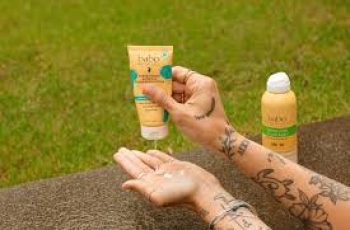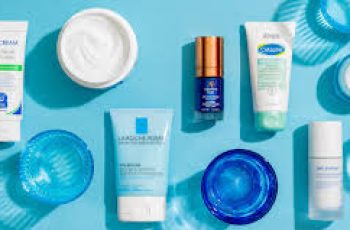
Should I Wash My Face Before or After Shaving?
As a dermatologist, I often get asked for shaving advice for men such as if you should wash your face before or after shaving. Shaving can be tricky for those with sensitive skin, ingrown hairs, rosacea, acne, and thick beards.
If you want to know the best way to get a close shave without irritation, I’ll share with you the advice that I give my patients. I will explain why I recommend washing the face before and again after shaving.
In this article, I will provide shaving advice for men based on factors like beard thickness, hair type, and skin sensitivity. I will also recommend skin care products and a skin care routine to use before and after shaving to help reduce razor burn and ingrown hairs.
As a skin care expert, my goal is to help you establish proper shaving techniques and find a skin care routine that works well with your Baumann Skin Type.
A good shaving routine includes using the right products for your Baumann Skin Type.
Face Wash and Shaving
Washing your face before shaving will lessen your chances of ingrown hairs and has other benefits too. I will break down the steps of shaving and help you figure out the best shaving routine for your skin type. There are a few things to consider first:
If you have sensitive skin, the water and temperature of the water you use can affect razor rash. To learn more about what water to use to shave, click here.
Make sure you choose a cleanser that is right for your Baumann Skin Type.
Only use aftershaves, moisturizers and face serums that are right for your Baumann Skin Type
This article will focus more on your shaving routine than which products to choose. Take the skincare routine quiz to find out the right products for your skin type.
Do I Wash My Face Before or After Shaving?
Wash your face before shaving and again after shaving. Optimally, you are washing your face twice. Once to prep the skin for shaving, and once to remove shaving cream and tiny hairs left behind during shaving.
Depending on your skin type, you may need different cleansers to use before shaving and after shaving.
sensitive skin needs warm water
Why wash my face before shaving?
Washing your face before shaving has many benefits, but you need to use the right face wash which we will discuss next.
These are the main reasons to Wash Your Face Before Shaving:
Soften Beard Hair: Washing preps the beard by softening coarse hairs so they are easier to cut smooth and close to the skin. Facial cleansers contain surfactants that lift dirt and sebum while expanding and weakening hair strands.
Remove Bacteria: Washing prior to shaving removes bacteria, fungi, and yeast that could infect any nicks or cuts that occur while shaving. Preventing bacterial contamination prevents painful folliculitis.
Removes sweat, sebum and SPF: they can clog pores.
Enhance Glide: Getting rid of excess facial oils and product buildup improves razor glide giving a smoother shave. This helps sensitive skin and prevents razor burn.
Exfoliate Skin: Using a low pH acidic cleanser before shaving swells and exfoliates the top skin layer for a closer shave. Salicylic acid, glycolic acid, and other exfoliants help lift and remove dead cells and debris.
Properly washing the face before shaving preps both the beard hairs and skin for the closest, smoothest shave possible while preventing irritation and infection.
Hot water softens hairs to prevent razor bumps.
How to Wash Face before Shaving?
Wash your face before shaving in the sink or in the shower. Use room temperature or warm water if you have rosacea, facial redness, or skin stinging. If you get ingrown hairs or pseudofolliculitis barbae, use hot water.
Use the face wash that we recommend in your morning regimen in the custom skincare routine that we offer here- or take the quiz to get out recommendations for what to use to wash your face before shaving.
For most skin types, a low pH cleanser or a facial scrub is good facial cleanser to use before shaving because it exfoliates, allowing for a closer shave. These are the best face washes for men to use before shaving:
Men’s Preshave Face Scrub
If you do not have rosacea or any irritation from retinoids, using a facial scrub to exfoliate the top dead layer of skin cell will help you get a closer shave. This may also help prevent ingrown hairs.
These are best preshave face scrubs for the 8 Resistant Baumann Skin Types.
[[C06]]
Preshave Facial Cleansers for Dry Skin Types
The best cleansers for dry skin types to use before shaving (if you do not have facial stinging or redness) are low pH cleansers with hydroxyacids like glycolic acid. These are good dry skin cleansers to prevent post shaving acne, ingrown hairs and razor bumps:
[[C04]]
The best cleansers for dry, sensitive skin types to use before shaving have gentle surfactants and soothing fatty acids. My all time favorite is Zerafite Creamy Cleanser which can also be used as a shaving cream in hypersensitive skin types.
Other options are cleansers with soothing ingredients to calm the skin before shaving:
[[C05]]
Preshave Cleansers for Oily Skin Types
Oily skin types will do well with salicylic acid cleansers. Use these before shaving- not after shaving- because they are acidic and will sting freshly shaved skin.
These SA cleansers can help prevent razor bumps, acne, clogged pores, and razor rash.
[[C01]]
Why Wash Face After Shaving?
As you will learn below in the section on shaving creams, shaving creams and gels have harsh ingredients that will irritate skin and cause a razor rash if not completely washed off. You should always wash your face after shaving to remove these ingredients and slivers of cut hair that can clog pores. Micellar cleansers are good post shave cleansers, but make sure you rinse them off completely. Use warm water- not cold, because you do not want to constrict your blood vessels which decreases penetration of active ingredients in your skincare routine you will apply after shaving and post shave cleansing.
How to Wash Face after Shaving
You can use the night cleanser in your custom skin care routine that we designed for you- or you can use a micellar cleanser or cleansing oil after shaving.
You can get more facial cleansing tips here.
Micellar Cleansers
Micellar cleansers are are the best cleansers to use after shaving the face for both dry and oily types. Some micellar cleansers have versions for dry skin and oily skin so read the label. Always rinse the micellar wash off because they have a small amount of surfactants. These are not aftershaves! They are cleansers and can irritate the skin if not rinsed thoroughly. (Some of my patients have made the mistake of leaving them on because they have the word “water” in them name and they did not realize that they have detergents in them.)
[[C32]]
Cleansing Oils
You can use cleansing oils after shaving if you area dry skin type and you are not planning on using an aftershave or a toner. Oily skin types should not use a cleansing oil unless you are going to use an aftershave or toner. The toner or aftershave will remove any of the oils on the skin deposited by the cleansing oil to prevent clogged pores.
Reason to use a cleansing oil:
Soothing fatty acids will be deposited on the skin. This is good for dry, stinging skin and will sooth any stinging after shaving.
Reasons to avoid using a cleansing oil:
Oily skin types do not need extra fatty acids and some oils are comedogenic.
Oil left on the skin can slow down penetration of any ingredients that follow. This means that if you use a cleansing oil post shave, you may decrease the effectiveness of any expensive facial serums.
If you choose to use a cleansing oil post shave, here are some we recommend:
[[C21]]
shower or shave first?
Shower or Shave First?
If you have a thin beard, no razor rash after shaving, and don’t get ingrown hairs, you can shave at your sink first and then shower. However, in my professional opinion, I think it is better for men to shave their face in the shower. Wash your face first in the shower and then do your shave and post shave wash in the shower. The heat and humidity in the shower will help weaken the hairs and prevent razor bumps.
One of my patients solved his ingrown beard hair problem by washing his face, applying a shaving balm, and going into a hot steam room for 5 minutes before showering and shaving.
Shaving Cream
Shaving creams contain ingredients that help weaken and soften hair to allow for a cleaner shave. A key ingredient is an alkali like sodium or potassium hydroxide. The alkaline pH of these ingredients causes the proteins in hair to denature, making the hair softer and less rigid.
From a physics perspective, a softer hair is less stiff and more pliable. When it is cut by a razor blade, the end is blunter instead of coming to a stiff, sharp point. A hair shaft that still has rigidity and sharpness is more likely to curve back and penetrate into the skin, becoming an ingrown hair. This risk increases for those with naturally curly hair.
Common ingredients in shaving creams include:
Surfactants – Allow the cream to spread easily and penetrate hair
Emollients – Softens and lubricates the skin
Alkalis – Sodium/potassium hydroxide to denature hair proteins
Depilatories – Break down hair structure chemically
While these ingredients help weaken hair for shaving, they can also irritate skin for some people. It is advisable to cleanse the skin after shaving .
when to use shaving cream
When to use Shaving Cream
Always use some sort of shaving balm to lubricate the skin and improve the razor glide (Unless you are using an electric razor).
You can use a creamy facial cleanser rather than a shaving cream to shave, but the fatty acids and oils will make the blade dull faster. This will not matter if you change your blade every time you shave.
Creamy Facial Cleansers to Shave With
The best skin care routine for men before and after shaving depends upon your Baumann Skin Type. Take the quiz and we will give you a custom personalized skincare routine.


